There’s something magical about walking into Grandma’s house—that familiar scent that hits you at the door, the sounds of the creaking hardwood floors, and the interior design seemingly frozen in amber from decades past. For many of us, our grandparents’ homes remained steadfastly unchanged since the 1960s, defying trends and resisting the urge to modernize that consumed younger generations. While our parents renovated bathrooms and updated kitchens, Grandma’s house stood as a time capsule of mid-century America. From plastic-covered furniture to avocado-colored appliances, these homes preserved a specific moment in American domestic life. But why did so many grandparents keep their homes exactly as they were? Let’s take a nostalgic tour through the distinct elements of 1960s grandma houses and explore the practical, emotional, and generational reasons behind their remarkable consistency.
1. The Plastic-Covered Sofa

Perhaps nothing symbolizes Grandma’s 1960s home more perfectly than the clear plastic slipcovers protecting her prized living room furniture. These transparent defenders of upholstery remained in place year-round, crackling beneath visitors and sticking uncomfortably to bare legs during summer visits. The plastic-wrapped sofa wasn’t just a stereotype—it was a genuine commitment to preservation seen in countless homes across America, especially in middle-class and immigrant households where furniture represented a significant investment. Tenement Museum pays particular tribute to this old practice.
Grandma kept these plastic covers in place because furniture was considered a once-in-a-lifetime purchase, not something to be updated with changing fashions. Having lived through the Depression era or its aftermath, many grandparents developed preservation habits that younger generations found puzzling. The protected sofa also signaled something important about how space functioned in the home—the living room was often a “formal” area reserved for special occasions and visitors, not everyday lounging. This distinction between everyday spaces and formal spaces has largely disappeared in contemporary homes, but for Grandma, that plastic-covered sofa in the rarely-used formal living room represented both practical protection and proper household management.
2. The Avocado Green Kitchen
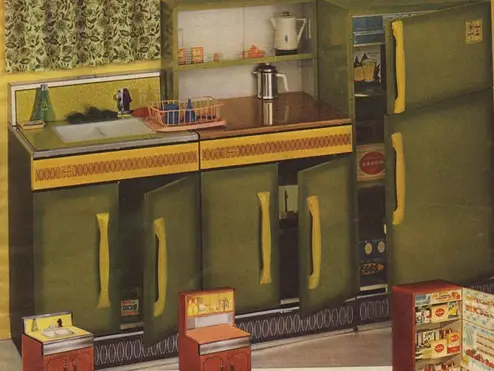
While contemporary kitchens feature stainless steel and neutral palettes, Grandma’s kitchen remained boldly committed to the distinctive color schemes of the 1960s. Avocado green appliances—refrigerators, stoves, and even dishwashers—coordinated with similarly-hued countertops and sometimes extended to floor tiles and wallpaper. This wasn’t just one appliance but an entire cooking ecosystem in shades that later generations would find bewildering. Alongside avocado green, harvest gold and coppertone brown formed the holy trinity of 1960s kitchen colors. Apartment Therapy goes through a whole rainbow of colors that were the big “thing” in American homes across decades of history and shifting trends.
These colorful appliances remained in place decades later because they represented significant investments made during a time when appliances were built to last—and last they did. Unlike today’s disposable appliances with planned obsolescence, that avocado green refrigerator from 1968 often continued working perfectly into the 2000s. Grandma saw no reason to replace functioning equipment simply because trends had changed. This practical approach to homemaking—where utility trumped fashion—defined a generation that valued durability over novelty. The colorful kitchen also reflected the optimistic consumerism of the post-war era, when bringing color into the home represented progress and prosperity after years of wartime austerity.
3. The Wood-Paneled Den
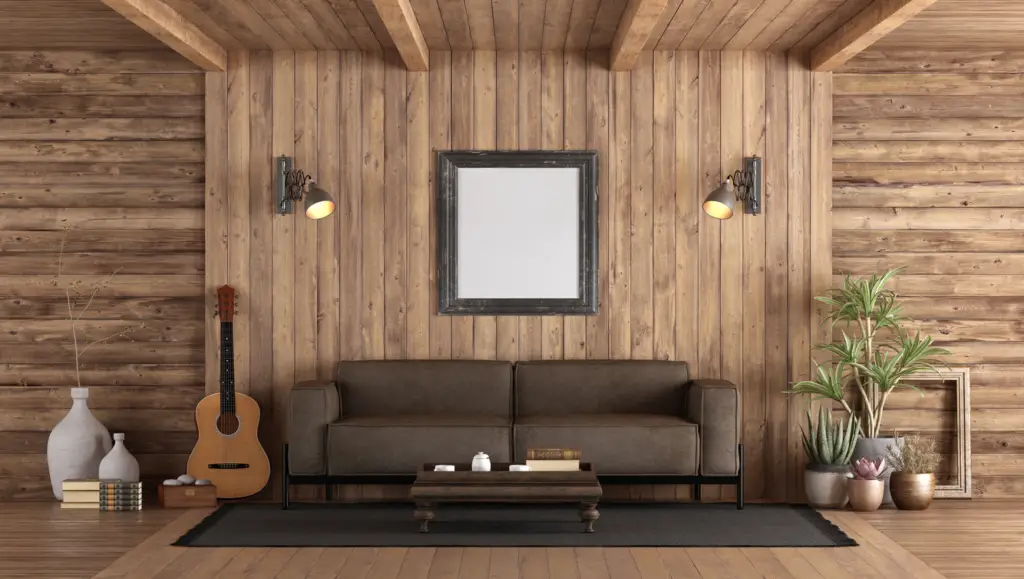
While contemporary homes embrace open concept designs with maximum natural light, Grandma’s house often featured a cozy, wood-paneled den or family room that embraced darkness and enclosure. These rooms typically featured dark wood wall paneling (often actually wood-patterned laminate), wall-to-wall carpeting, and heavier furniture oriented around a television console. The aesthetic was decidedly masculine, often serving as Grandpa’s domain within the household division of space. This, at least, House Beautiful is happy to report is enjoying a comeback, and may just be better than ever before.
This room remained unchanged because it represented the significant mid-century shift toward casual family living spaces separate from formal areas. The den signaled middle-class prosperity and the luxury of having space dedicated to leisure and entertainment. The dark, enveloping environment also served practical purposes in the early television era—reducing glare on screens with limited brightness capabilities. These rooms often doubled as home offices or hobby spaces, with built-in shelving for books, collectibles, or model displays. While contemporary design favors brightness and visual openness, Grandma’s wood-paneled den preserved the distinctly 1960s notion that relaxation spaces should feel like protective caves—insulated from the outside world and responsibilities.
4. The Dining Room China Cabinet
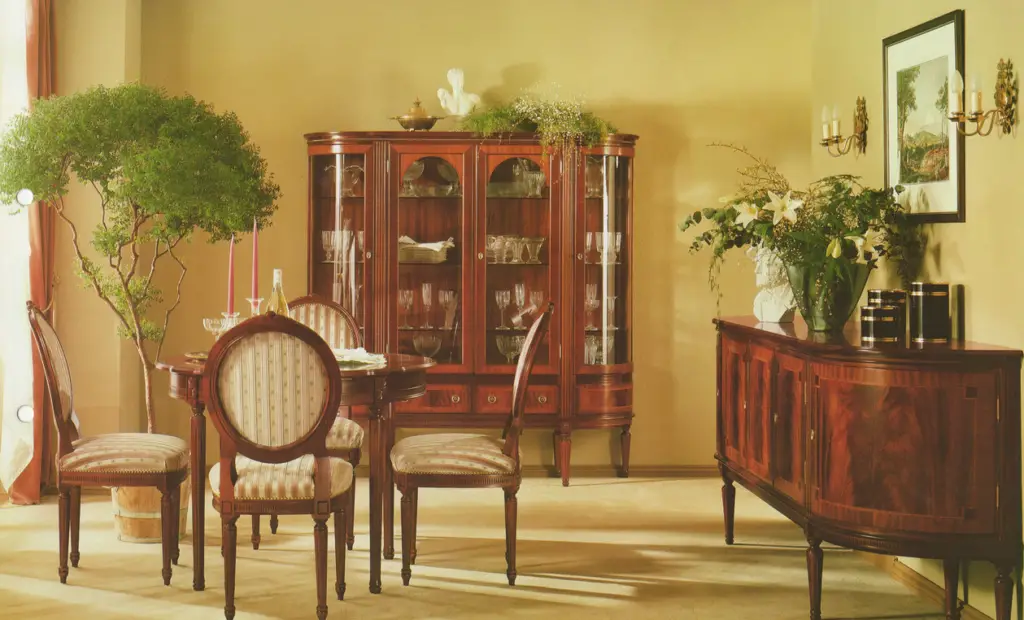
The formal dining room in Grandma’s house typically featured a substantial wooden china cabinet displaying her finest dishes, crystal, and silver—items used only for holidays and special occasions. These imposing furniture pieces, often in dark wood with glass-front display sections and storage drawers below, dominated dining spaces. Inside, meticulously arranged collections of matching china sets, crystal stemware, and silver serving pieces waited patiently for the next holiday meal.
These china cabinets remained unchanged because they represented both financial and emotional investments. The collections inside often marked significant life events—wedding gifts, anniversary presents, or items inherited from previous generations. Unlike today’s more casual approach to dining, Grandma’s generation viewed formal dining equipment as essential to proper homemaking and hospitality. The china cabinet also served as a public display of family continuity and status—showing that certain traditions and objects were being preserved and respected. As subsequent generations embraced more casual dining habits and moved frequently, the formal dining room with its permanent display of special-occasion tableware became increasingly rare, making Grandma’s formal dining room a testament to a different approach to domestic life and social rituals.
5. The Bathroom Time Capsule

Grandma’s bathroom remained a monument to mid-century design long after most homeowners had updated these spaces. Pastel-colored toilets, sinks, and bathtubs in pink, blue, mint green, or yellow defined these spaces, often paired with matching colored wall tiles with contrasting trim. Additional distinctive features included shell-shaped sinks, carpeted toilet seat covers, and occasionally carpet on the bathroom floor—a practice that would horrify contemporary designers and homeowners alike.
These colorful bathrooms remained unchanged largely because bathroom renovations represent significant expense and disruption, which many older homeowners preferred to avoid once they reached a certain age. The colored bathroom fixtures of the 1960s were also built to extraordinary standards of durability, with many functioning perfectly after decades of use. While younger generations viewed colored bathroom fixtures as hopelessly dated, Grandma often saw them as perfectly serviceable or even preferred their cheerful colors to the clinical white that later became standard. These preserved bathrooms also reflected changing priorities—as grandparents aged, home improvement projects became less important than other pursuits, from travel to supporting grandchildren or engaging in community activities.
6. The Wallpaper Wonderland

While contemporary homes favor neutral paint colors, Grandma’s house often featured wallpaper in virtually every room, each with distinct and often bold patterns. Floral designs dominated bedrooms and living spaces, while kitchens might feature fruit motifs or geometric patterns. Bathrooms often had waterproof vinyl wallpapers with seaside themes, and hallways displayed textured or damask patterns. These weren’t modest accent walls but full room treatments, sometimes with coordinating borders and fabric elements.
This wallpaper remained in place because removing it represents one of home maintenance’s most dreaded tasks—a labor-intensive process involving steaming, scraping, and inevitable wall repairs. Once installed, wallpaper of the 1960s was expected to remain in place for decades, unlike today’s more temporary approach to decor. Many grandparents also genuinely preferred more decorative wall treatments to the minimal aesthetic that came to dominate later design trends. The wallpaper often represented significant design decisions made when establishing a “forever home,” chosen with the expectation that it would define those spaces for the long term. As design trends moved toward more frequent changes and updates, Grandma’s generation remained committed to their original choices, seeing no reason to disrupt perfectly good walls for something as trivial as changing tastes.
7. The Knotty Pine Kitchen Cabinets

Before white or wood-tone cabinets became standard, many 1960s kitchens featured distinctive knotty pine cabinetry—instantly recognizable for its yellowish color and prominent dark knots in the wood grain pattern. Often finished with clear varnish that yellowed further over time, these cabinets were frequently paired with laminate countertops featuring metal edging. Additional wooden elements like spice racks, bread boxes, or decorative plates on walls completed this warm, rustic aesthetic that diverged dramatically from both earlier and later kitchen design.
These kitchens remained unchanged because cabinet replacement represents one of the most expensive home renovations—an investment many elderly homeowners couldn’t justify for purely aesthetic reasons. The knotty pine cabinets were also extremely durable, constructed during an era when cabinets were built to last generations rather than decades. Many grandparents genuinely preferred the warm, traditional appearance of wooden cabinets to newer styles, associating them with the cozy, family-centered kitchens they had aspired to create. The distinctive colonial or country aesthetic these cabinets embodied also reflected cultural values important to this generation—tradition, naturalness, and domestic warmth rather than sleek efficiency.
8. The Colonial or Early American Living Room
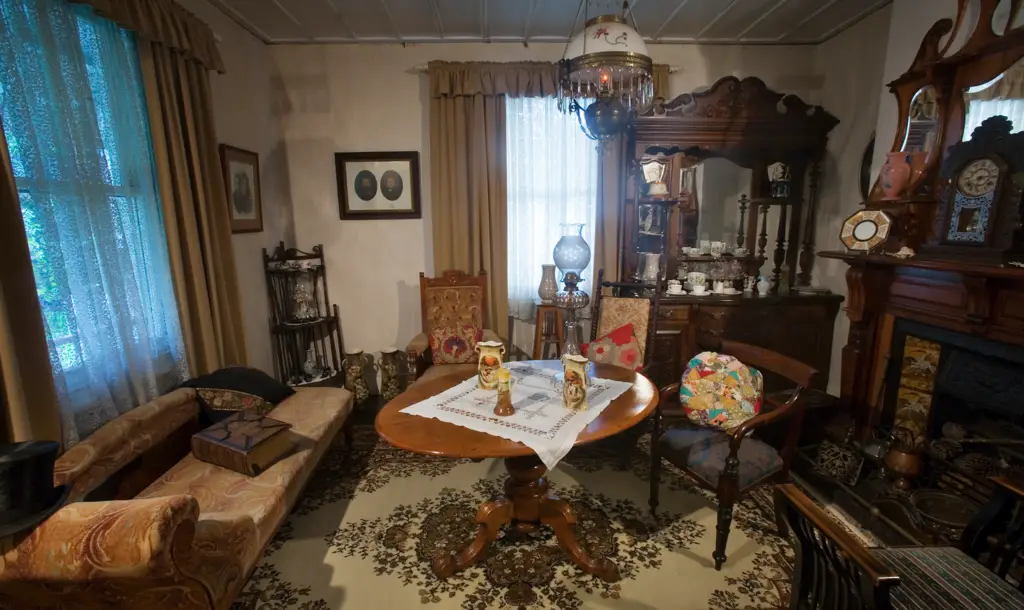
While sleek mid-century modern furniture has enjoyed a renaissance in recent decades, many 1960s grandma houses featured “Early American” or colonial-style furniture that never cycled back into fashion. These living rooms typically contained maple furniture with warm amber finishes, upholstery in plaids or colonial prints, and accessories like eagle motifs, copper decorations, and perhaps a grandfather clock. Wingback chairs, colonial-style sofas with curved wooden arms, and maple coffee tables with spindle legs defined this distinctly traditional aesthetic.
This style remained unchanged because it reflected important cultural values for a generation whose formative years coincided with both World War II and the patriotic celebrations of American historical milestones like the 1976 Bicentennial. The colonial aesthetic represented stability, tradition, and American values during a time of significant social change and international tension. Choosing furniture in this historical style also reflected a longer view of consumption—selecting pieces considered “classic” rather than fashionable, intended to remain appropriate indefinitely rather than requiring frequent updates. For many grandparents, these choices weren’t just about furniture but about expressing cultural continuity and national identity through domestic choices—values that made them unlikely to embrace newly trendy styles in later decades.
9. The Curio Shelves and Collectible Displays
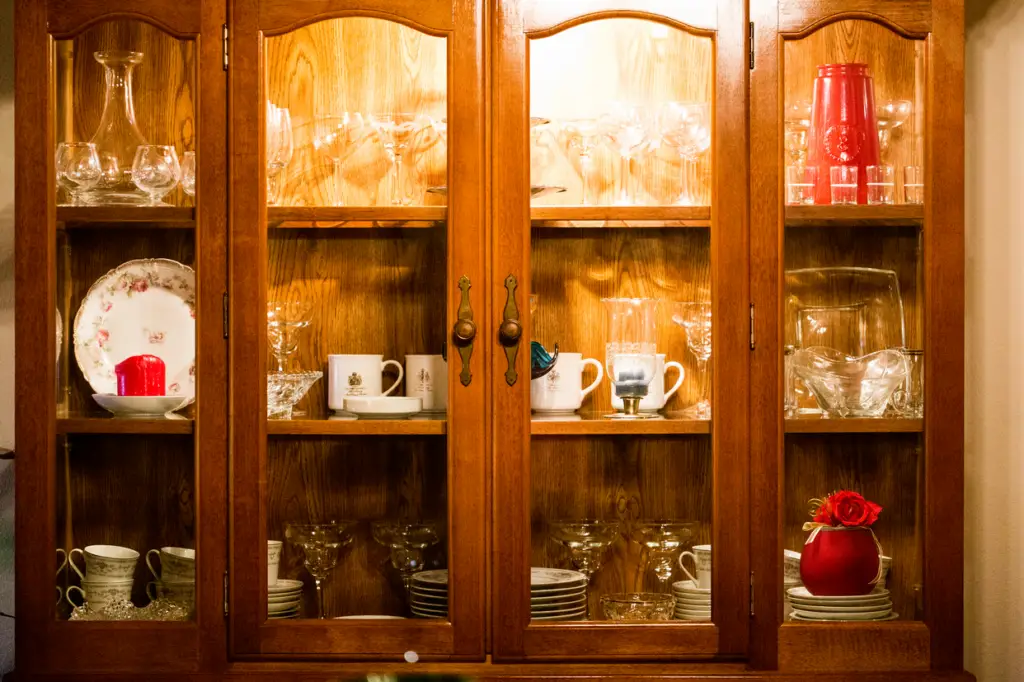
Before minimalism became aspirational, Grandma’s home celebrated collections and displays of treasured objects. Glass-fronted curio cabinets, floating wall shelves, and dedicated display areas showcased collections of figurines (often Hummel, Precious Moments, or Department 56), souvenir spoons, commemorative plates, or thimbles. These weren’t random accumulations but carefully curated collections, often added to through gifts from family members who knew exactly which piece Grandma still needed.
These displays remained unchanged because they represented both personal history and ongoing social connections. Each item often came with an associated memory or relationship—the figurine from a special anniversary trip, the commemorative plate gifted by a favorite niece. For a generation that placed high value on physical mementos, these collections weren’t clutter but tangible representations of life’s meaningful moments and relationships. Managing and displaying collections also provided a fulfilling hobby and conversation piece for many older adults. While younger generations might find these displays fussy or overcrowded, for Grandma they represented a lifetime of experiences, relationships, and interests made visible—something much more meaningful than following changing design trends that increasingly favored empty space over personal expression.
10. The Formal Doilies and Antimacassars
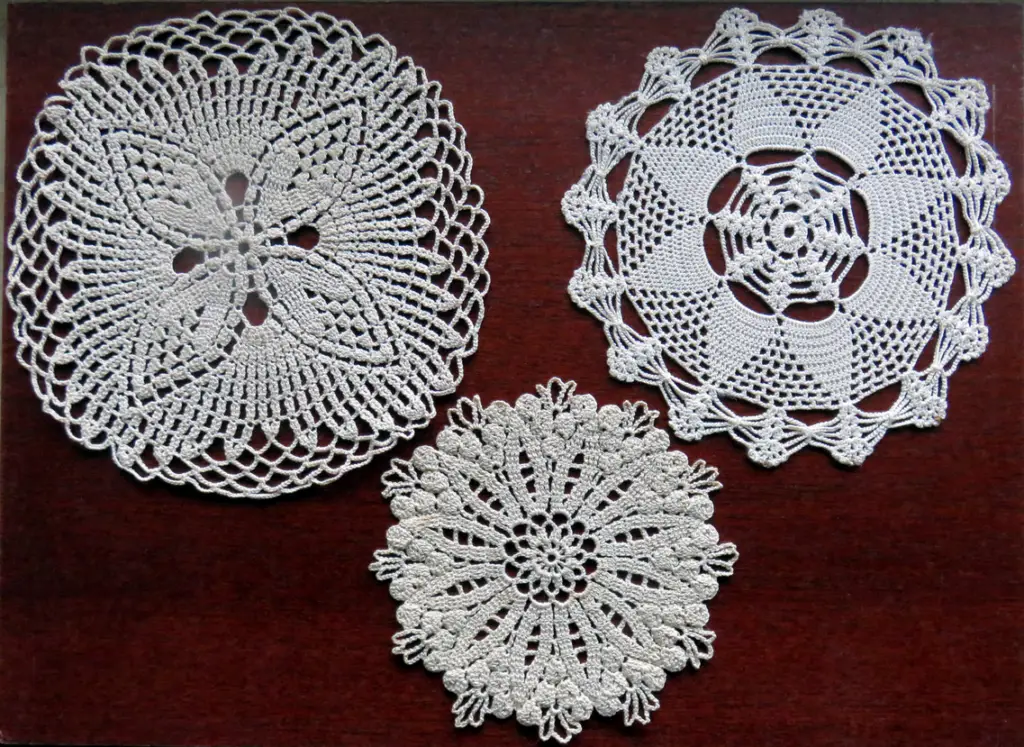
One of the most distinctive features of Grandma’s 1960s home was the strategic placement of doilies and antimacassars (protective cloths) on furniture surfaces. These decorative fabric or crocheted items appeared under lamps, on side tables, along sofa backs, and on chair arms—serving both decorative and protective functions. Often handmade through crochet or tatting, these items represented countless hours of detailed handwork and skills passed down through generations.
These textile accessories remained in Grandma’s home long after they fell out of wider fashion because they connected her to traditions of domestic craftsmanship increasingly rare in modern households. For many grandmothers, the ability to create beautiful, functional textiles represented an important aspect of homemaking and personal skill. These items also continued to serve their original practical purpose—protecting furniture surfaces from damage caused by oil from hair products (the original purpose of “antimacassars”) or from lamps, beverages, or decorative objects. In a generation that valued extending the life of household goods through careful maintenance, these protective elements remained logical rather than merely decorative. The doilies also connected many grandmothers to their own cultural heritage traditions, especially in households with European ancestry where such handcrafts held significant cultural meaning.
11. The Console Television as Furniture
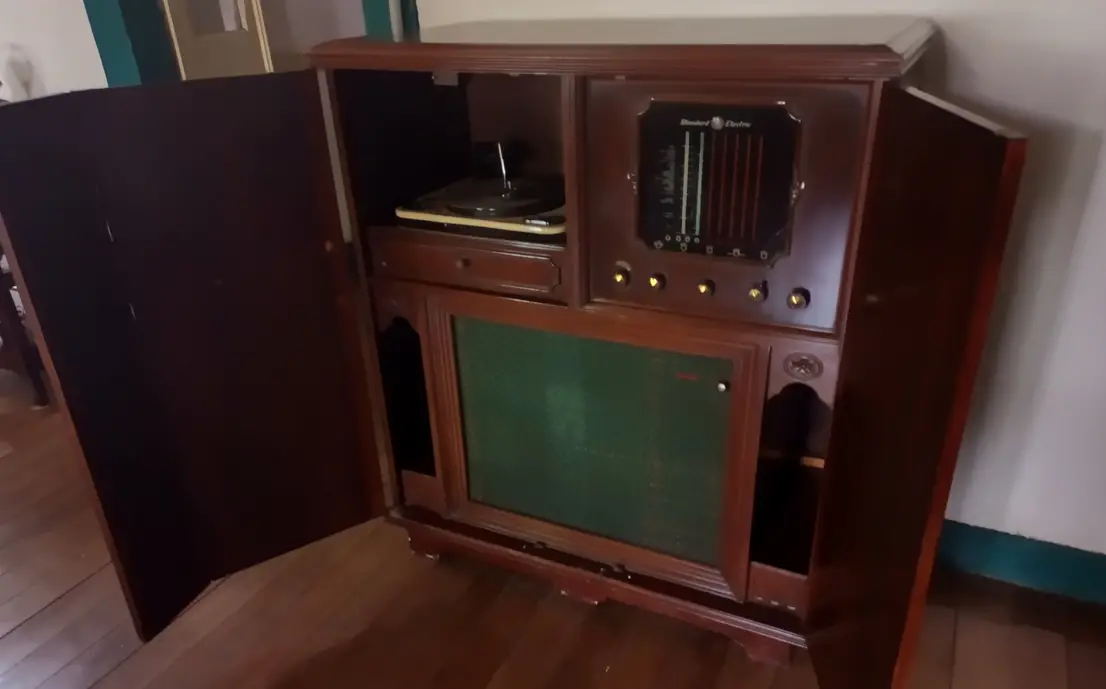
Unlike today’s wall-mounted screens, Grandma’s television from the 1960s was a substantial piece of furniture—typically a large wooden console with the relatively small screen nestled among speakers and storage compartments. Often crafted in the same wood finish as other living room furniture, these televisions were designed to blend with the decor rather than dominate it. Some featured sliding doors to hide the screen when not in use, emphasizing that television was an occasional activity rather than a constant presence.
These massive TV consoles remained in place long after flatter, larger televisions became available because they represented significant investments and continued to function decades after purchase. Many grandparents saw no compelling reason to replace a working television simply to gain a larger screen or newer features. The console design also suited viewing habits formed in the three-channel era, when television watching was a specific activity rather than constant background. As a substantial piece of furniture, the console TV had also established its place in the room’s careful arrangement—with seating positioned for optimal viewing and other activities planned around this focal point. Replacing it would require rethinking entire room arrangements that had functioned successfully for decades.
12. The Landline Phone Nook

Before wireless communication, Grandma’s house featured dedicated phone spaces—small desks, hallway tables, or built-in wall niches specifically designed around the landline telephone. These areas typically included a chair or stool for extended conversations, a notepad for messages, and a personal phone directory. The phone itself—often in beige, avocado, or harvest gold to match other household elements—remained tethered to the wall with a spiraling cord that limited mobility but defined this communication station.
These phone nooks remained unchanged even as communication technology evolved dramatically because they represented an approach to telephone communication fundamentally different from contemporary practices. For Grandma’s generation, phone calls were specific activities conducted in designated spaces, not continuous accessibility. Many older adults continued to value this boundary between communication time and other activities, preferring the clarity of a landline connection to the convenience of mobile phones. The physical phone directory, often meticulously maintained with frequent updates and corrections, also represented an organizational system that many grandparents trusted more than digital contacts. As mobile phones became ubiquitous, Grandma’s house often maintained the landline as primary—keeping familiar numbers, established habits, and the comfort of a system that had reliably connected them to loved ones for decades.
These preserved homes also served important psychological functions, providing a sense of familiarity and continuity in rapidly changing times. For grandchildren, these time-capsule houses offered a different experience of home—one where objects had histories, spaces had consistent purposes, and the material environment told stories about family history and values. In our era of disposable goods and constantly updated spaces, Grandma’s unchanging house reminds us of a different relationship with the material world—one where objects were chosen carefully, maintained diligently, and kept for lifetimes rather than seasons. Perhaps this explains the recent resurgence of interest in mid-century aesthetics—a nostalgia not just for distinctive design elements but for the solidity and continuity they represented.


